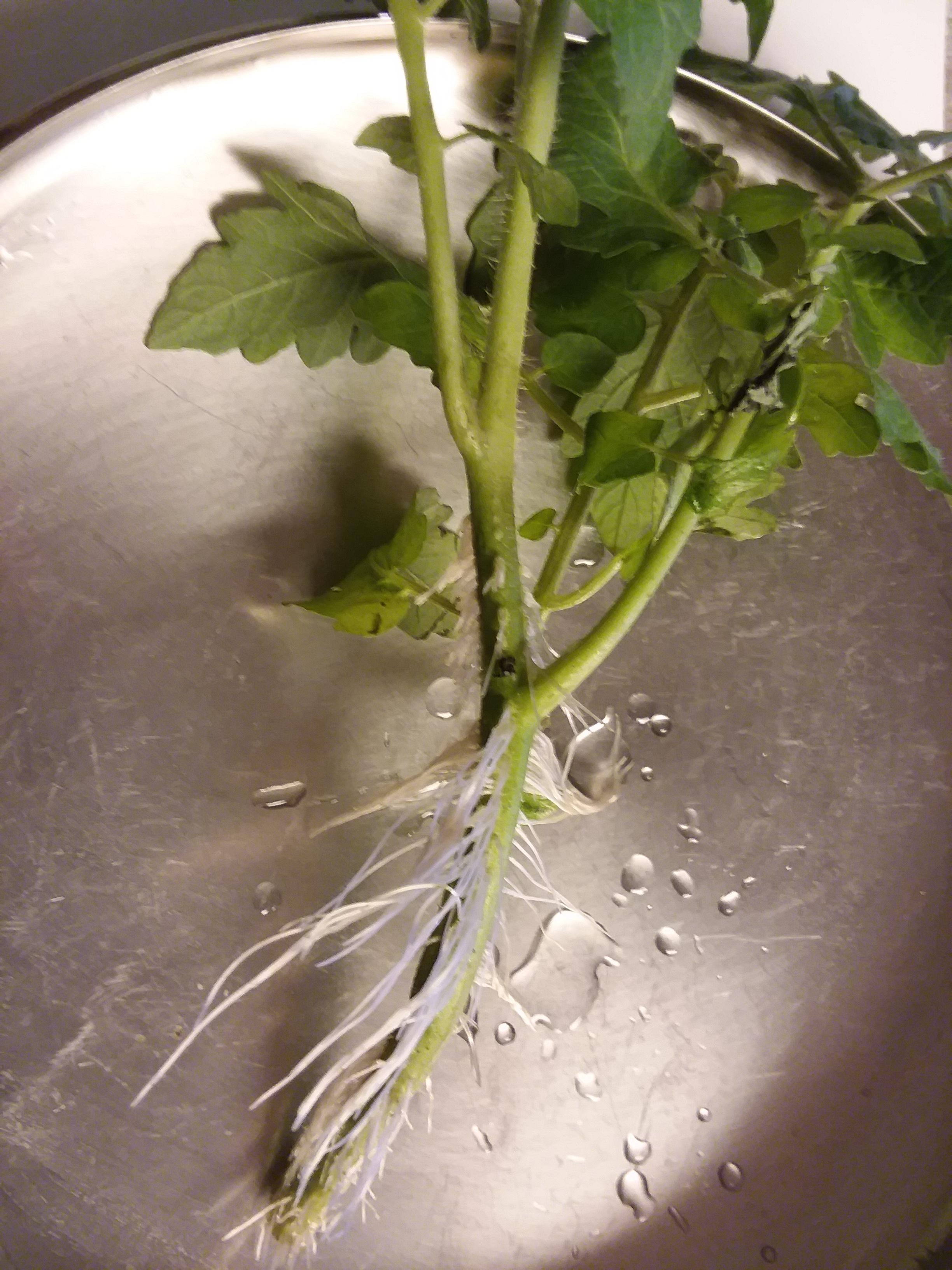Tomatoes must be slam dunk easy. I broke the top off one of my A Grappoli D'Inverno plants when detwangling it from the others to remove it from the indoor nursery area the Friday before last. I quicklike brought it in and stuck it into a jar with a yellow scorpion branch that's been growing roots since mid-January when I cut back my OW plants.
Today, I pulled them to check the tomato and change the nutrient solution and found this. Haha, she gets her own jar now.

Today, I pulled them to check the tomato and change the nutrient solution and found this. Haha, she gets her own jar now.



